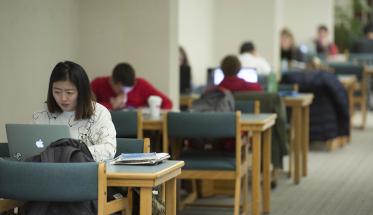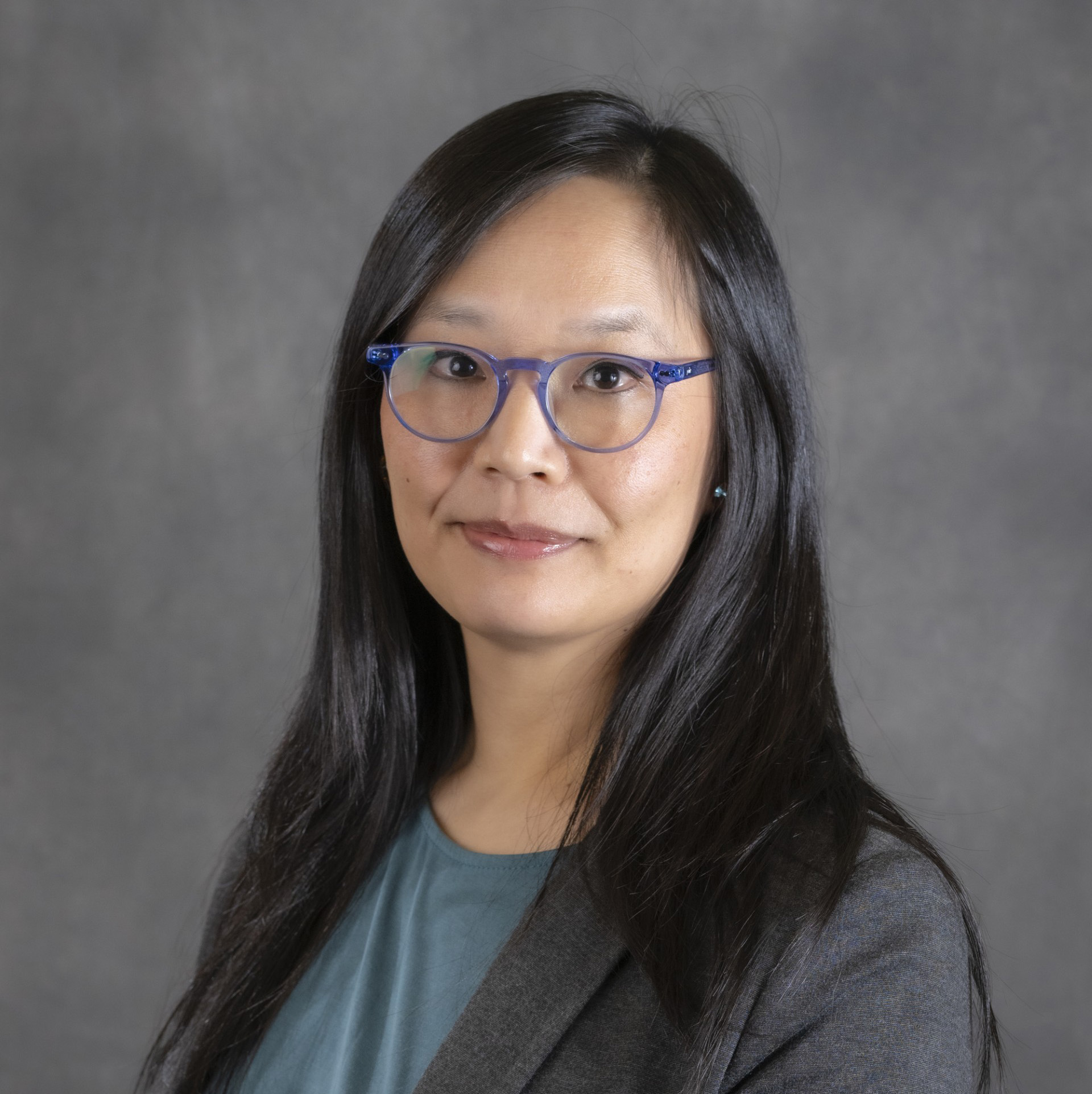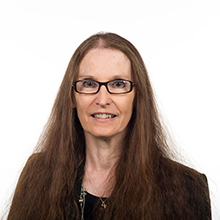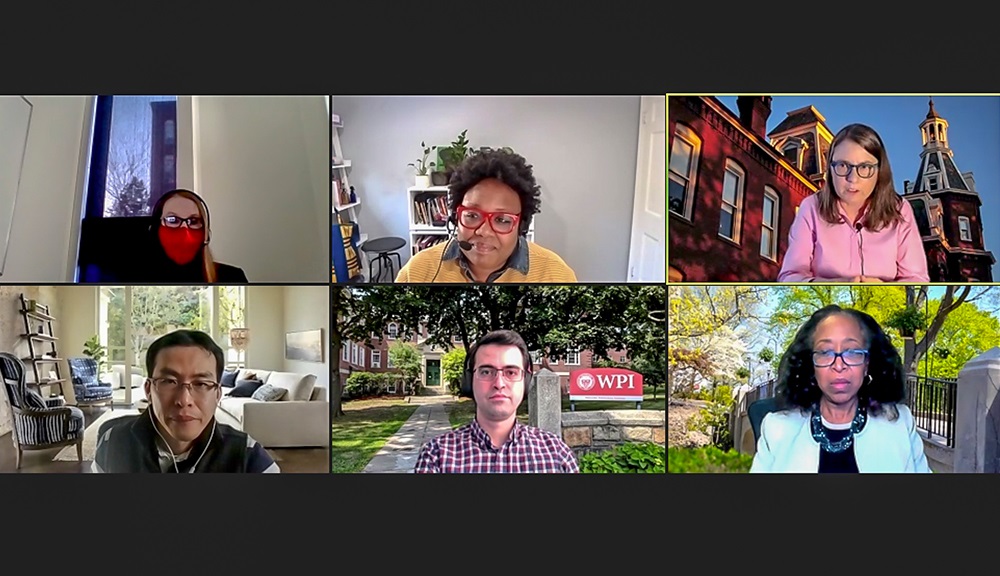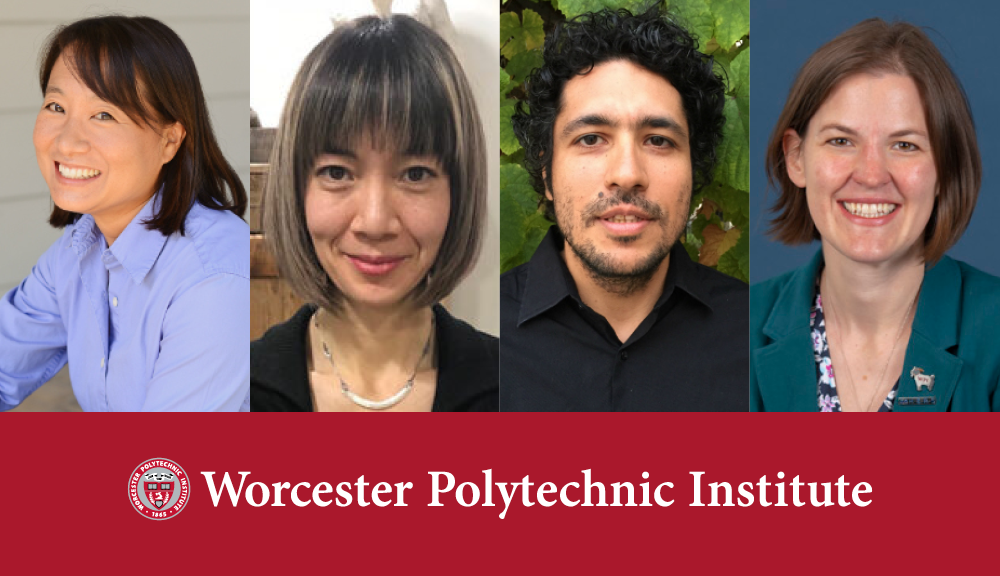As diversity and inclusion issues are becoming more prominent on campuses nationwide, academic libraries are working to ensure that students have access to relevant resources for their own research and coursework. At Gordon Library, a recently developed Diversity & Inclusion Guide is available to help people find the information they need.
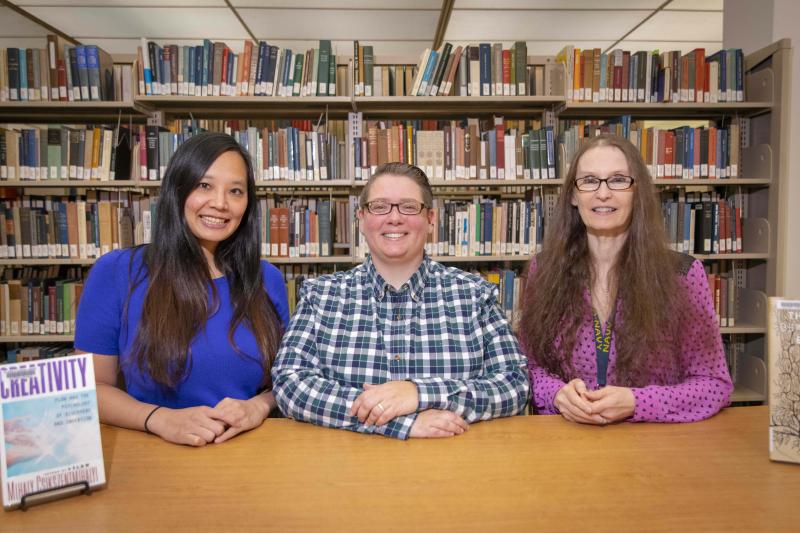 (L-R) Emily O’Brien, Lori Steckervetz, Lori Ostapowicz-Critz
(L-R) Emily O’Brien, Lori Steckervetz, Lori Ostapowicz-Critz
Library staff members Emily O’Brien (digital repository and metadata assistant), Lori Ostapowicz-Critz (associate director of academic strategy), and Lori Steckervetz (research and instruction librarian) are working to bring the guide to life. Noting that a similar guide to human resources materials already exists at the library, they explain that Bonnie Walker (executive director of diversity and inclusion strategy) reached out and asked if the library could create one for diversity and inclusion.
The guide compiles such relevant information surrounding issues as LGBTQ, disabilities, socio-economic, gender, or race, culture, and ethnicity. Making the information especially helpful for the community is that the guide pulls in information that might be hard to find on its own.
Encompassing Personal and Academic Interests
“This is beyond students doing research,” says Steckervetz. “WPI is an engineering school, so we have really rich engineering-focused resources. But students are doing work that’s interdisciplinary for their IQPs and social sciences.” Others might have personal interest in topics unrelated to academic pursuits. The diversity and inclusion guide helps direct students to relevant information in whatever form is available, including journals or video. “You can’t ignore a subject area because you don’t have a major in it," she says. "Students may still have an interest.”
Faculty are also using the resources and seeking to make them available for their curriculum. “Some have courses directly related to diversity and inclusion issues and so have asked us to purchase resources related to the curriculum,” says Ostapowicz-Critz.
“You can’t ignore a subject area because you don’t have a major in it. Students may still have an interest.” -Lori Steckervetz
As students take new approaches to learning and as advanced technology introduces new media for students’ use, the library staff will look to new materials to add. Steckervetz says the rise of YouTube and TED talks means students will want access to different resources. The guide highlights the diversity in the collection and allows visitors to see that Gordon Library is not a STEM-only resource. “When we were putting this together, we were also thinking of students who might be seeking careers that could involve diversity and inclusion,” says O’Brien. “They can go to the guide or see the initiatives and see the ways they could take on roles within an institution.”
A Wider Purpose
Even more than providing opportunities to access information easily, Steckervetz says the library’s efforts are important in other ways. “This shows that the library is making a visible effort to show up in that conversation,” she says.
While diversity and inclusion topics continue to gain attention on college campuses nationwide, the issue is a professional one academic libraries are beginning to address. “We want to change that and get involved and do what we can to get the materials out to people,” says Ostapowicz-Critz.
The library staff is also taking a look at how diversity and inclusion can be addressed in other areas of the building. The recently opened Reflection Space offers a place for students to have some peaceful time in the ways that feel most comfortable to them. There's a place for prayer, for meditation—and even for pacing—to reflect the diverse ways people use a quiet space.
There will also be more focused attention on celebrating heritage months, including Hispanic Heritage Month (September) and Black History Month (February). “We are acknowledging the cultures of our diverse student body and trying to reflect that diversity back to them,” says Steckervetz.
The process is one that will continue to evolve. “There is more work to be done,” says Ostapowicz-Critz. “It’s on our radar and we look forward to acquiring more resources and actively seeking to meet the need on campus.”
